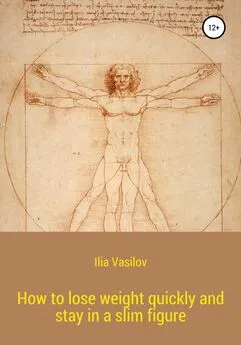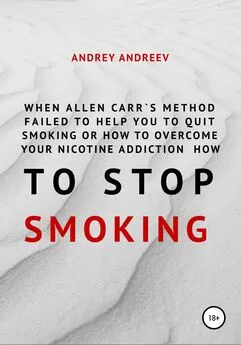Jacqueline Whitehart - The 5:2 Bikini Diet: Over 140 Delicious Recipes That Will Help You Lose Weight, Fast! Includes Weekly Exercise Plan and Calorie Counter
- Название:The 5:2 Bikini Diet: Over 140 Delicious Recipes That Will Help You Lose Weight, Fast! Includes Weekly Exercise Plan and Calorie Counter
- Автор:
- Жанр:
- Издательство:неизвестно
- Год:неизвестен
- ISBN:нет данных
- Рейтинг:
- Избранное:Добавить в избранное
-
Отзывы:
-
Ваша оценка:
Jacqueline Whitehart - The 5:2 Bikini Diet: Over 140 Delicious Recipes That Will Help You Lose Weight, Fast! Includes Weekly Exercise Plan and Calorie Counter краткое содержание
The 5:2 Bikini Diet: Over 140 Delicious Recipes That Will Help You Lose Weight, Fast! Includes Weekly Exercise Plan and Calorie Counter - читать онлайн бесплатно ознакомительный отрывок
Интервал:
Закладка:
When we deprive our body of food for longer than normal, for example during a fast, we notice changes in some of our hormones. As the levels of certain hormones change, this has a knock-on effect on different types of cells within our body. One of these hormones, Insulin-like Growth Factor 1 (IGF-1), is proven to decrease as we fast. IGF-1 is produced in the liver and is similar to insulin. Its purpose in the body is to make cells grow and produce new cells. When levels of IGF-1 decrease, our body produces fewer new cells and concentrates on repairing old ones. This state of ‘repair’ is very beneficial as it slows down the ageing process and may reduce the risks of cancer, diabetes and heart disease.
Another hormone that fasting seems to affect is a nerve cell growth factor in the brain, which changes the way neurons in the brain grow. This research is in its infancy and has yet to be tested on humans, but there are several indicators that suggest this is the mechanism that ultimately leads to a reduction in risk factors for cognitive diseases such as Alzheimer’s.
There’s a final exciting difference between standard calorie-restricted diets and intermittent fasting. Any weight you lose doing intermittent fasting is body fat! If this is not a reason to do the 5:2 diet over anything else then I don’t know what is.
Other diets may show a decrease in body fat and muscle, but with intermittent fasting it seems to be just fat. Scientists are unsure at present why this is true, but it has been seen in a variety of studies so there is a good scientific basis for these findings. The most likely explanation is that when we fast, we have to use resources in our body (i.e. fat) for fuel rather than the food we have eaten. It may also be the key as to why the 5:2 diet is so successful for so many people.
Optimizing the benefits – do we need to skip meals?
The simple answer is yes. If your primary goal is health benefits, not weight loss, the science suggests you should eat only one meal on a fast day. Remember that how you consume calories over the fast day does not affect weight loss. Top scientists from the United States are in agreement that to get the absolute best out of intermittent fasting you need to either fast completely for 24 hours or, at most, have one small meal in the middle of the 24-hour period. The tests where they try other kinds of calorie restriction over the 24-hour period just haven’t been done yet, so it’s hard to tell for sure whether the science backs this up.
If you’re reading this and thinking, Help, there’s no way I can only eat once a day, then you’re not alone. And this is why I do not advocate skipping meals unlessit’s something that appeals to you andit’s something you can see yourself sticking to in the long term.
First and foremost this is because it does not affect the rate at which you slim. If your main objective is to lose weight andgain the health benefits that come with sustained weight loss, then stick to the 500/600 calories on your fast days, but do not worry about when you eat them.
Secondly, although the health benefits may not be optimized, you are still getting some of them. You are fasting and your body is going into repair mode so don’t panic if you are not fully ‘optimized’. Is anything in your life fully optimized? I know it’s not the case for me.
Finally, and most importantly, what do you think is best: having a strict fast with only one meal but finding it so hard and de-motivating that you give up after a month oreating two or three small meals on your fast day and finding it sustainable in the long term?
I’d say the latter is by far the best option, but use your own preference. If you find it easier to skip a meal, then do so. I often, but not always, skip lunch on a fast day. But if three meals a day works for you then don’t change it. You are doing great as you are.
What’s in a name?
There are many different names for diets that are the same or similar to the 5:2 diet, so it’s no wonder people are getting confused.
The fast diet or 5:2 diet
These are, as far as anyone can tell, the same diet – just two names for the same thing. I think the double name comes from the origins of the diet. The 5:2 diet didn’t exist before a TV programme by Michael Mosley in August 2012. Many people, including myself, started following the simple principle of eating less two days per week. At this stage it didn’t have a name and as people were discussing it on Twitter and other social media sites it needed a name, so the simplest name stuck – the 5:2 diet. Later, as the diet became a phenomenon, marketing types got hold of it and it also became known as ‘the fast diet’. In the US, where the diet never grew through word of mouth, it seems to be just called ‘the fast diet’ or ‘the British fast diet’.
The 2-day diet
The 2-day diet has a totally different root to the 5:2 diet, despite its similarity in name and action.
The 2-day diet grew out of some amazing research by Dr Michele Harvie at the University of Manchester over the last few years. Harvie is a breast cancer specialist and has been looking at ways to reduce breast cancer risks through diet. She has done experiments with groups of overweight women, where she radically changed their diets just two days a week. The diet has many similarities to 5:2, in that you restrict calories two days a week and eat normally for five. But the calories are restricted to 650 for both men and women and the food eaten on a fast day is more prescriptive – it includes a certain amount of milk and is totally carbohydrate free (rather like the Atkins diet) on the fast days. Most contrastive to the 5:2 diet is that the two days must be consecutive.
Her research highlighted two important things. First, that dieting two days a week was easier and that more people stuck to it than dieting all the time. Harvie compared two groups of women. The first group fasted two days a week and the second group followed a standard calorie-restricted diet, sticking to 1500 calories a day. After three months of following the diets, the research showed that intermittent fasters were almost twice as likely to stick to their diet.
The second and most impressive finding of her research was the reduction in a breast-cancer-causing hormone called leptin, which was reduced on average by 40 per cent, and a drop in insulin levels of 25 per cent, cutting the diabetes risk in these women.
Alternate day fasting (ADF)
Alternate day fasting originated in the US before the fast diet became popular in the UK. The principles of this diet are very simple. A strict fast diet is followed every other day. It also restricts how many meals you eat in that one day. The 5:2 diet is a variation on this theme, allowing you to fast for fewer days in a week and also to take weekends off. They are similar in terms of weight loss and effects, although obviously you may lose weight faster on ADF. But the success rate (i.e. the number of people who stick to the diet in the long term) is lower.
There has been an interesting study in the US by Dr Varady into ADF. Varady’s research is fascinating. She took a group of both male and female overweight volunteers and started them on ADF for a year. This study is still progressing, but initial results in this case show a low dropout rate, gradual and continued weight loss and falls in both total and LDL (‘bad’) cholesterol.
Window or 8-hour fasting
Window fasting is a slightly different way of structuring your fast days. You fast for a part of your day, seven days a week. For example, a popular structure is that you fast from 8 p.m. on one day until 12 p.m. the following day. This means that your eating ‘window’ is 12 p.m. to 8 p.m. every day. Some people find that this kind of fasting fits more naturally into their lifestyle as they can eat a normal lunch and dinner every day, but it’s definitely not to everyone’s taste.
There has not been much research into this particular type of intermittent fasting, but the results are likely to be similar to that of 5:2 fasting or ADF.
Intermittent fasting (IF)
Intermittent fasting is a coverall term for any type of fasting diet. So the 5:2 diet, the fast diet, the 2-day diet and ADF all come under the umbrella of intermittent fasting.
The advantages of 5:2/fast diet over other forms of intermittent fasting
There is a reason why more people follow the 5:2 diet than any other form of IF – you are more likely to have success because it’s easier to stick to and simpler to fit into your lifestyle. The dropout rate is lower than other types of IF and, indeed, than other types of diet. Put simply, the 5:2 diet is the simplest and most sustainable fast diet.
Possible dangers and side effects of the 5:2 diet
Because this diet is a fairly radical approach to weight loss, it is wise to speak to your doctor first to see if it is safe to follow the diet.
Current medical opinion suggests that the benefits of fasting are unproven. This is because long-term studies take several years, or even decades, to complete and this is a relatively new field.
The good news is that no significant dangers or problems with the diet have been reported so far. We can also take note that certain religions have been fasting for hundreds of years. Fasting during Ramadan requires Muslims to fast during daylight hours for a month. Fasting is also common among most Hindus. They fast on certain days of the week based on their belief and to appease certain deities. Both Hindus and Muslims believe that fasting is important for the wellbeing of human beings as it nourishes both physical and spiritual needs.
What about side effects?
As with all big changes to your normal diet and routine, there can be side effects. Some people will not experience any side effects, but a few will find the side effects to be so uncomfortable that they will be unable to continue with the diet.
Some of the side effects seem to occur only when fasting is first attempted. These effects, such as headaches and dizziness, will diminish and hopefully disappear altogether over a period of several weeks.
Dehydration seems to be a common side effect of following the fasting diet that doesn’t fade in time. It is easily dealt with by sipping plenty of water or other low-calorie drinks regularly throughout the fasting day.
What about irritability? Yes, some of us do get grumpy when we are feeling hungry. This does seem to reduce as we get used to fasting. But I can get grumpy on fast days and normal days too!
Some people report difficulties sleeping due to hunger and daytime sleepiness. This is less common than other symptoms. Most people feel a buzz of energy during their fasting days. Difficulties sleeping can occur, particularly if you eat the majority of your calories during the early part of the day. Increasing the size of the evening meal and making sure it is rich in complex, filling carbohydrates helps the body feel sustained until after we go to sleep.
Finally, here’s one side effect that has affected me. I’ve been feeling the cold all through the winter, but particularly on fasting days. It has been a rather cold winter this year, but I have been suffering more than I would expect. The result has been an increased wearing of jumpers – perhaps two or three at a time and a higher heating bill. I take comfort in the fact that this is likely to mean that my body fat is reduced and the diet is working well.
Читать дальшеИнтервал:
Закладка:










